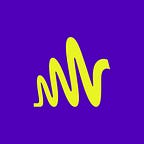The Podcaster’s Gift Guide
Our recommendations for everything you need to take your podcast production to the next level — add these to your own wishlist, or get them for your podcasting-obsessed friends and family.
It’s really easy to get started recording your podcast with Anchor using just your phone or computer. But maybe you’re ready to level up your audio setup with a better microphone, or a mixer to add more people to your show. We’re asked all the time for recommendations for home podcasting gear that works well with Anchor, so we’ve compiled this list of our favorites.
All of this hardware is known to work with Anchor, but keep in mind that there’s plenty more out there that will fit a huge variety of budgets and needs. We think this list is a great jumping-off point for getting started with tried-and-true podcasting gear.
Accessories
Small add-ons to make your audio life better
Apple Lightning to USB3 Camera Adapter
If you have an iPhone or iPad with a Lightning port, Apple’s camera adapter actually opens a ton of possibilities for audio. It adds a full-sized USB port to your device, and nearly all class-compliant audio and MIDI devices will work with tons of audio apps, including Anchor!
If you have an Android device with a micro USB port, you can use an OTG adapter to plug in full-sized USB devices, like microphones and mixers. And if your phone has a USB Type-C port, there are OTG adapters for that, too.
This is a very inexpensive adjustable mic stand that clamps to a desk and keeps your microphone in front of you. (If you’re looking for something a little more sturdy, but 3–4 times the price, you can upgrade to the Rode PSA1.)
A pop filter is an inexpensive way to make your voice sound a little better. Basically, it’s a screen that sits between your mouth and your microphone to lessen the boomy effects of “P” and “B” sounds as air hits the microphone.
USB Microphones
Microphones that plug directly into USB ports. Most of these will work on your computer out of the box, or on your mobile device with one of the adapters listed above.
A great inexpensive USB microphone. To use this one on mobile, you’ll need the Apple Lightning to USB3 Camera Adapter (for Lightning devices) or an “OTG adapter” for your Android phone. This microphone is unique in that it also has an XLR connection on the bottom, so you can plug it into mixers or other audio equipment without using USB.
Another good USB microphone that’s better suited for quiet, small rooms, or for music. To use this one on mobile, you’ll need the Lightning adapter for iOS or an “OTG adapter” for your Android phone. It also looks pretty cool on your desk!
XLR Microphones
Many of the better-sounding microphones out there connect not through USB, but by XLR cable. That’s a standard analog connector that mixers, microphones, and other pieces of audio equipment use to connect to each other.
This is a tried-and-true mic most often found in live music contexts. It’s not the crispest mic for podcasting, but it’s a solid mic for a reasonable price, and it’s able to withstand some jostling if you plan on moving around with it.
A nice-sounding dynamic microphone that’s used by many podcasters.
This is a terrific podcasting mic, despite the fact that it’s intended for live use. It’s got a very narrow supercardioid pickup pattern, so it’s forgiving of imperfect rooms (but you’ll need to stay close to it), and it has great clarity for voice. It’s a little more expensive than the other mics on this list, but the sound is great.
This is a classic mic you’ll see in many studios, and that reputation is earned. The SM7B is a nice, smooth, full-sounding mic that pairs well with many voice types. But it’s not cheap, and for this mic to really shine, you’ll need to pair it with a good preamp, or a device like the Cloudlifter, which boosts the gain being fed to the mic.
This is another popular studio microphone, with a studio price to match. To me, this one sounds a little more “broadcasty” than the SM7B. It also requires lots of gain, so again, you may want to use a nice preamp or a Cloudlifter with this mic.
Mixers
Want to use multiple microphones on your podcast? You’re looking for a mixer: a device that takes multiple audio inputs and, well, mixes them together into one signal.
A very basic but inexpensive mixer with two mic inputs, and a USB connection that can send the mix to your computer or mobile device.
A great little mixer with four microphone inputs, some built-in effects, and a USB connection that can send the mix to your computer or mobile device. It even has built-in compressors on two of the mic inputs, to smooth out the sound of your voice.
This is a brand new mixer, but it seems extremely promising for podcasters, especially those who want to record remote interviews. It’s got four mic inputs, two remote guest inputs, a built-in soundboard for sound effects or jingles. It can record to a microSD card in the mixer itself, or you can plug it into your phone or computer to record the mix there.
And if you want to learn more, our Head of Production John Lagomarsino covered the ins and outs of microphones and gear on our in-house guide to podcasting, I Should Start a Podcast:
Haven’t started your own podcast yet? Check out our handy How to Start a Podcast guide for tips and tricks on how to make something awesome with Anchor. And as always, we’d love to hear your feedback, via email or on Twitter.
